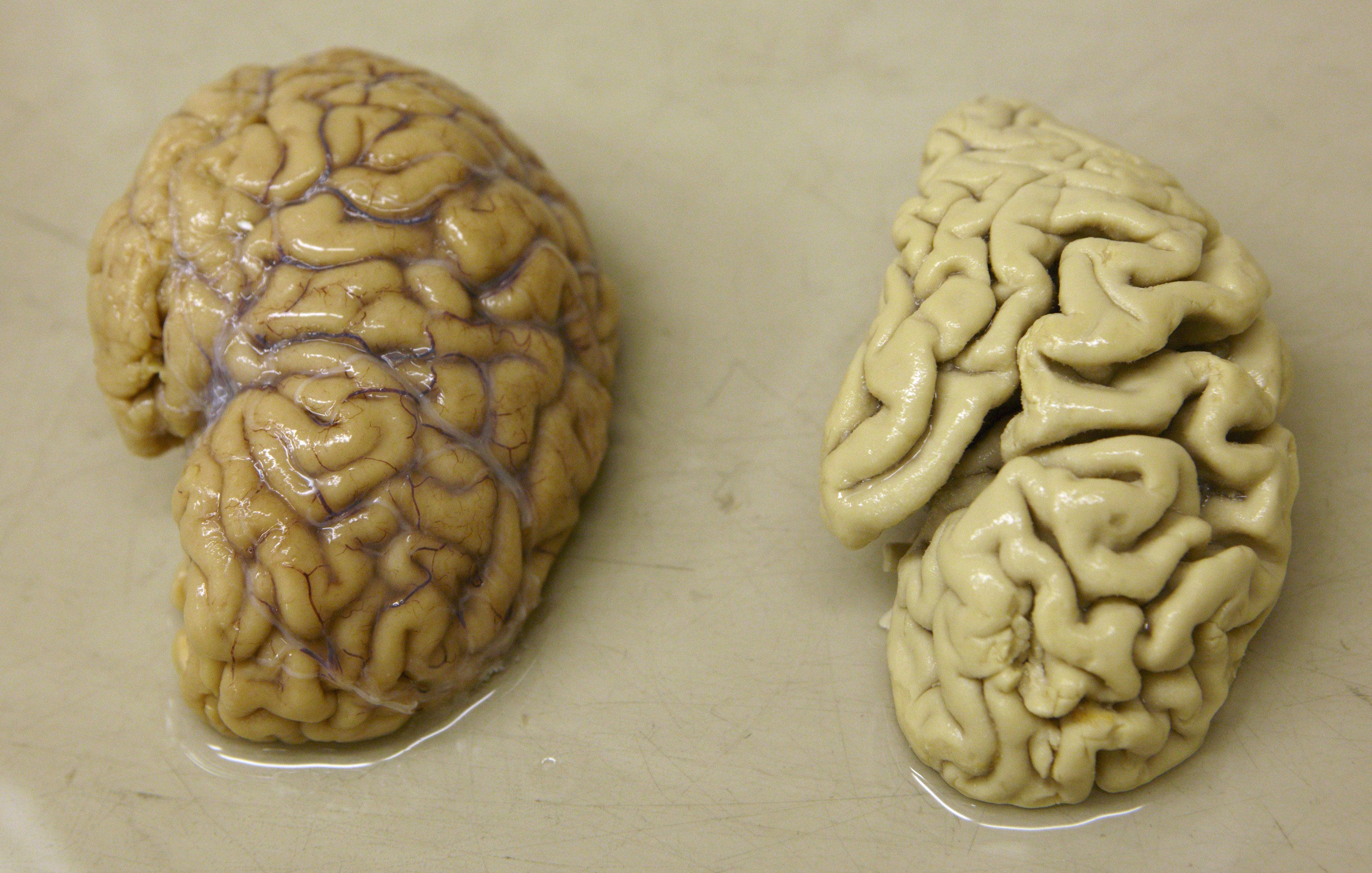The man has a wife and kids and works as a civil servant while his brain is mostly filled with fluid.
I-Road Motorcycle-Car Hybrid
Posted in transportation
The potential vaccine would address a protein buildup that occurs when two proteins, amyloid-beta (a-beta) and tau, die and create plaques that block connections between brain nerve cells, says the study from researchers at Flinders University in Adelaide Australia in partnership with a research team at the Institute of Molecular Medicine, and University of California, Irvine. Autopsies have shown that these plaques are always present in the brains of deceased Alzheimer’s patients, although Medical News Today reported that it is not clear if there are other underlying processes also contributing to the disease.
Try Newsweek for only $1.25 per week
“Essentially what we have designed is a vaccine that makes the immune system produce antibodies, and those antibodies act like tow trucks so they come to your driveway, they latch on to the breakdown protein or car and they pull it out of the driveway,” said Flinders University medicine professor Nikolai Petrovsky, ABC News reported.
Nintendo fans may be anxiously awaiting next March’s supposed NX launch (and The Legend of Zelda: Breath of the Wild), but the Japanese gaming giant has a little something up its sleeve in the meantime: a re-release for the iconic NES. Dubbed the Nintendo Entertainment System: NES Classic Edition, the console comes in the form of a miniaturized, HDMI-equipped take on the original and comes with 30 games built right in. Said Nintendo of America President and COO Reggie Fils-Aime:
We wanted to give fans of all ages the opportunity to revisit Nintendo’s original system and rediscover why they fell in love with Nintendo in the first place. The Nintendo Entertainment System: NES Classic Edition is ideal for anyone who remembers playing the NES, or who wants to pass on those nostalgic memories to the next generation of gamers.
Players will even be able to pick up a second controller for just $10 USD when the revamped NES drops this fall. And best of all? The mini console will only run you $60 USD.
A team has used simple quantum processors to run “quantum walk” algorithms, showing that even primitive quantum computers can outperform the classical variety in certain scenarios—and suggesting that the age of quantum computing may be closer than we imagined.
By now, most readers of Futurism are probably pretty well acquainted with the concept (and fantastic promise) of quantum computing.
For those who aren’t, the idea is fairly (!) simple: Quantum computers exploit three very unusual features that operate at the quantum scale—that electrons can be both particles and waves, that objects can be in many places at once, and they can maintain an instantaneous connection even when separated by vast distances (a property called “entanglement”).
Hololens Galaxy Exploring
Posted in augmented reality, space
Profusa (South San Francisco, CA) has won a $7.5 million grant from the Defense Advanced Research Projects Agency (DARPA) and the U.S. Army Research Office for further development of its tissue integrated biosensor technology, the company said Tuesday.
The U.S. military sees value in the technology improving mission efficiency through real-time monitoring of combat soldier health status.
“Profusa’s vision is to replace a point-in-time chemistry panel that measures multiple biomarkers, such as oxygen, glucose, lactate, urea, and ions with a biosensor that provides a continuous stream of wireless data,” Ben Hwang, PhD, Profusa’s chairman and CEO, said in a news release.
This is one of those sites you’re going to want to try yourself. Take any black and white image, feed it to the algorithm, and watch as it spits out its best guess at a color version, which is often quite convincing.
Using a deep learning algorithm developed by Richard Zhang, Phillip Isola, and Alexei Efros of UC Berkeley, the process was trained on one million images. Though it currently fools humans only 20% of the time, that’s still a significantly higher rate than previous iterations and represents an exciting step forward, and further training should only increase that rate. Imagine a time when Photoshop can colorize a photo in one step, leaving the end-user to just tweak a few hues here and there. Such a capability would be huge for restoring old family photos and the like.
I played with it a bit today, and the results were rather interesting. It struggles a bit with skin tones, which may be due to dataset bias (meaning the team may have trained it more with landscape-style images), but often the results are fairly good and definitely close enough that they could be tweaked to believability without a lot of effort.









